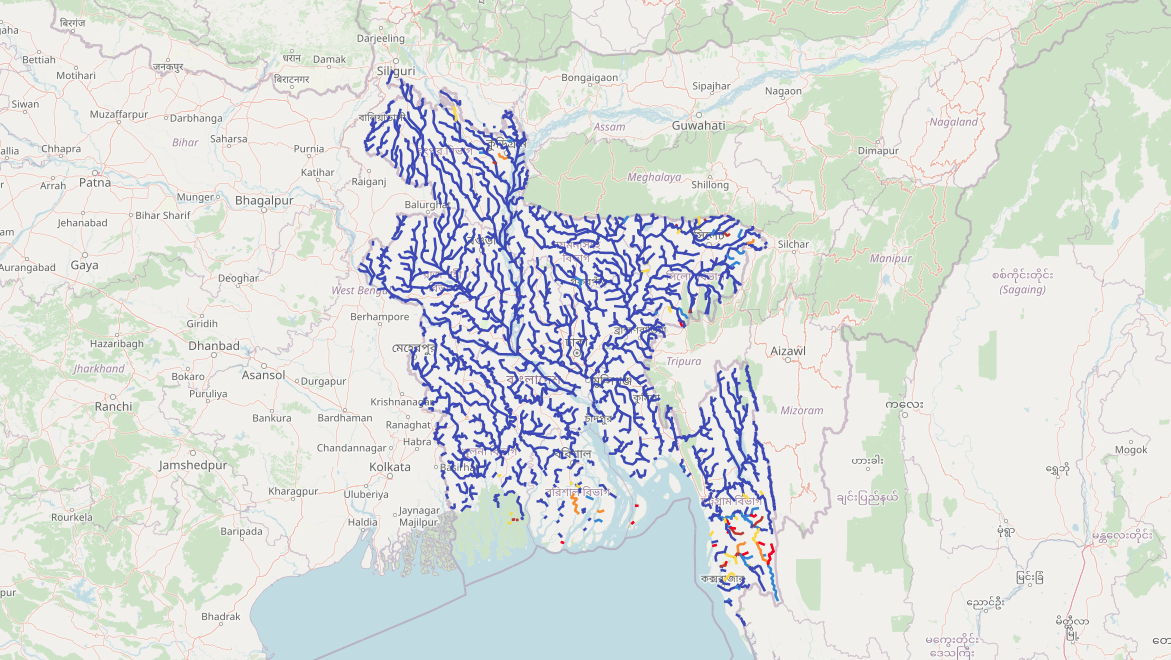Enhancing Flood Early Warning Services in the Hindu Kush Himalaya
Enhancing Flood Early Warning Services aims to build the resilience of communities in the Hindu Kush Himalaya region by increasing flood forecast lead times.
Image

Enhancing Flood Early Warning Services (EWS) aims to build the resilience of vulnerable communities in the Hindu Kush Himalaya region by increasing flood forecast lead times and hosting the information on an interactive web platform.
The service includes an operational 15-day flood forecast based on the downscaled Global Flood Awareness System (GloFAS) forecasting system using the RAPID routing model at designated locations agreed to by the partner agencies in Bangladesh and Nepal. The High Impact Weather Assessment Toolkit (HIWAT) will be used to forecast 24 to 48 hour high intensity rainfall events supporting short term flash flood applications. In addition, a flood inundation mapping and assimilation of exposure (population and infrastructure) tool will be developed for pilot basins in Nepal and in Bangladesh to help assess risk and provide information on potential impact to response team. To better deliver actionable information to impacted communities, a web-based information portal will be developed and customized for each country.
Early warning is one of the key elements of disaster risk reduction. Early warning systems are often deficient in delivering actionable information in both lead time and content. Existing in-situ station-based flood EWS are challenged by short lead times and being hazard-based early warning leading to inadequate response times and insufficient information about the scale of potential impact. In Bangladesh, the hydrological models for flood early warning suffers from a lack of upstream data, making it difficult to increase lead time of flood forecasting downstream. Longer lead times and access to accurate, appropriate information ensures better preparedness for responders and, in turn, saves more lives and properties. Disseminating warning information, and giving communities timely access, is also important to get a maximum return from investing in early warning services.
View the tools below:
Streamflow Prediction System (Bangladesh)
Streamflow Prediction System (Nepal)
Streamflow Prediction System (Bhutan)




